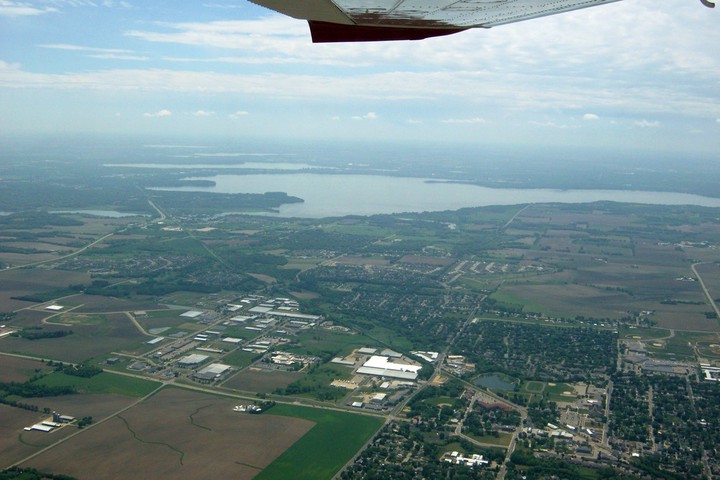Human-Environment Interface
 Urbanization around Lake Mendota, Wisconsin.
Urbanization around Lake Mendota, Wisconsin.
In the anthropogenic landscapes of the 21st century, human decisions must be treated as an endogenous part of the water cycle, rather than an external forcing.
Ongoing work in this area focuses on irrigator-driven groundwater conservation programs in the High Plains Aquifer and the global limits of human modifications to the water cycle.
Key past findings:
- In the Platte River Watershed, Nebraksa, we found that agriculture water use was increasing and growing more reliant on irrigation, while urban users were reducing water use and able to rapidly curtail outdoor use during drought, providing enhanced water management flexibility ( Zipper et al., 2017.
- The impacts of urban water conservation can cascade ‘upward’ to the watershed scale by altering streamflow patterns upstream and downstream of the city, and ‘downward’ to sub-municipal scales due to diverse water conservation behavior shaped by socio-economic conditions ( Breyer et al., 2018).
- Social media can be used to track crop planting and has the potential to provide information about agricultural management and emerging concerns ( Zipper, 2018).
- As physical science increasingly includes human dimensions and moves towards open data, it is critical that hydrologists be trained in research ethics ( Zipper et al., 2019).